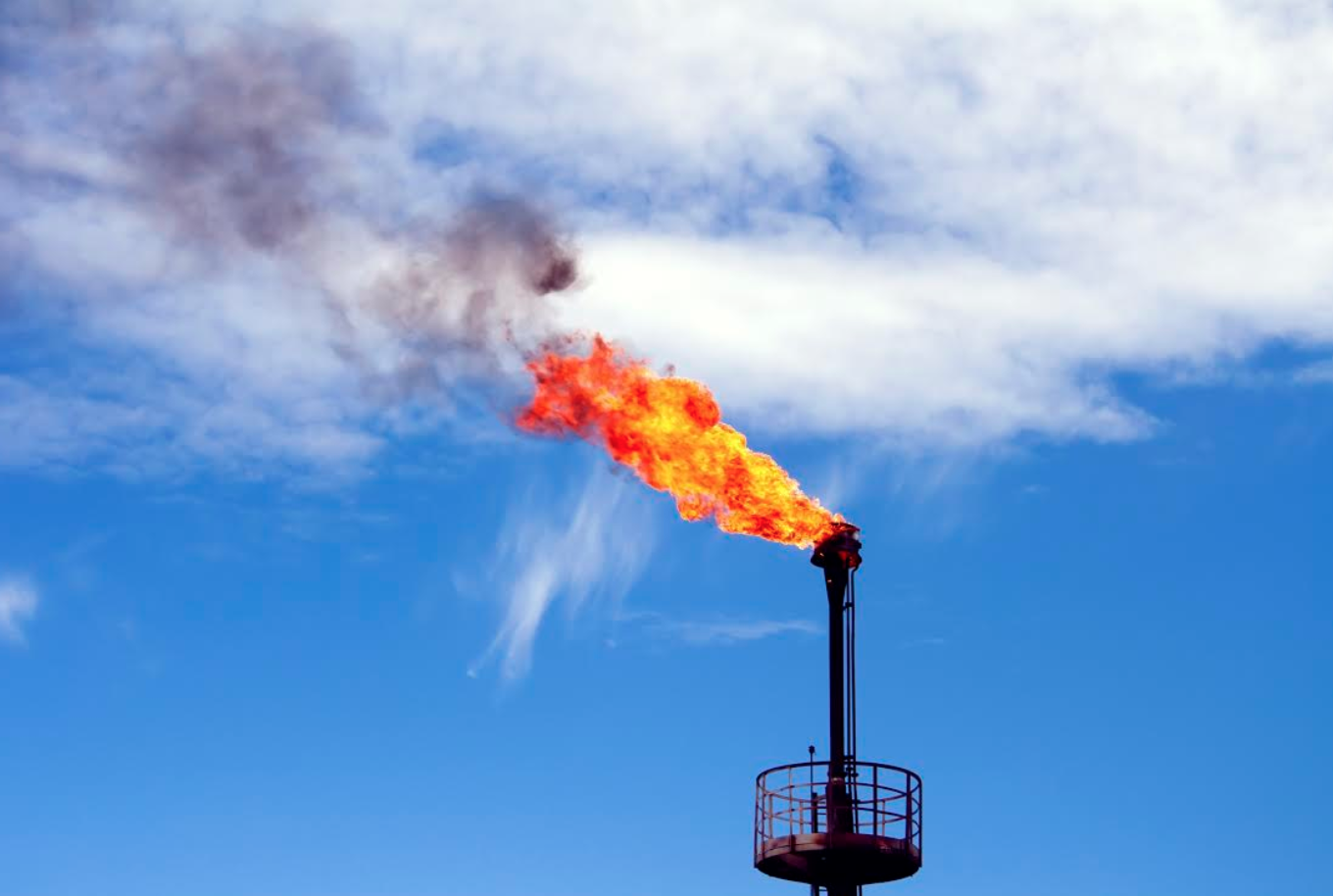What is methane?
Methane is an invisible, odorless, organic compound comprised of a single carbon atom surrounded by four hydrogen atoms (CH4), and is one of a family of compounds called hydrocarbons. It is found widely in nature, and is the main component of natural gas. Methane is also produced through digestive processes (agricultural feedlots, for example), as well as when bacteria decompose natural materials (landfills, for example), releasing the compound into the air.

Why does methane matter?
When released into the atmosphere, methane acts as a greenhouse gas, trapping UV rays from the sun and heating the air, and is the second most prevalent greenhouse gas emitted in the U.S. behind carbon dioxide (CO2). Although methane has a shorter lifespan in the atmosphere than CO2(approximately 12 years compared to CO2’s potential of thousands of years), it is a much more potent greenhouse gas. On a 20-year timescale, it absorbs 86 times more heat than CO2, rapidly warming the planet and exacerbating climate disruption.
How does methane get into the atmosphere?
Methane is emitted from both natural processes and human activity. Human activities are the largest source of methane pollution, accounting for over 60 percent of total emissions, and these include industrial processes, agriculture, and waste decomposition.
The oil and gas industry is the largest industrial source of methane pollution in the U.S. (nearly 30 percent of total emissions), and in 2013, was responsible for 7.3 million metric tons of methane emissions, or the equivalent of 160 coal-burning power plants. The amount of methane emissions from this sector is expected to increase 25 percent in the next 10 years.
Both natural gas and crude oil drilling produce methane pollution.
Although traditional oil and gas extraction methods are still in practice today, the recent boom in oil and gas drilling is the result of the relatively recently embraced process of hydraulic fracturing, otherwise known as fracking. Fracking involves drilling horizontally through shale rock formations far below the surface, and fracturing the rock to release oil and/or natural gas deposits. Significant amounts of methane are leaked into the atmosphere during the production, storage, processing, distribution, and transportation of natural gas. In addition, natural gas is often found with petroleum, and some oil companies either flare (burn) or vent (release) methane during the production, refinement, and distribution of oil.
Other sources
Globally, agriculture is the largest source of methane pollution. Domestic livestock, such as cattle, sheep, goats, and others, all produce methane during their digestive process. This process, called enteric fermentation, produces 26 percent of U.S. methane emissions. In addition, the storage of livestock manure also emits methane, accounting for 10 percent of methane pollution in the U.S. Although animals produce the methane, this portion of emissions is considered a human activity because it is a part of our food industry.
Methane is also emitted from landfills, which are the third largest emitter of methane in the U.S. (18 percent), as well as wastewater management.
Natural processes also produce methane, including wetlands, which are the largest source of natural methane emissions, as well as wildfires, volcanoes, and oceans. However, these sources make up a small portion of total methane emissions.
The EPA’s role in reducing methane pollution
As part of the Obama administration’s overall plan to reduce greenhouse gas pollution and combat climate disruption, the EPA announced its first ever plans to regulate methane pollution in August 2015. The new rules require newly built or modified oil and gas infrastructure to trap more efficiently the methane that is released during the drilling process.
This is an important step forward, and establishing limits on methane pollution will set a precedent to move even further towards reducing the potent and harmful greenhouse gas.
What do methane limits mean for Louisiana?
Louisiana is one of the top five natural gas-producing states. It accounts for about 7% of U.S. marketed gas production and holds about 8% of the nation's natural gas proved reserves. Consequently, this means that a significant portion of methane pollution is coming from Louisiana oil and gas development, and the EPA’s standards will help improve Louisiana’s air.
In addition to producing climate-cooking methane pollution, fracking sites also negatively contribute to regional air quality by producing harmful ground-level ozone. Chemicals known as volatile organic compounds (VOCs) are released into the atmosphere throughout the production process, and upon reacting with sunlight and nitrogen oxides, form lung-irritating ozone that especially affects more susceptible groups such as the young and elderly, as well as those with lung problems such as asthma, emphysema, and chronic bronchitis. While methane pollution is a global issue, reducing VOC pollution is important for the health of local communities.